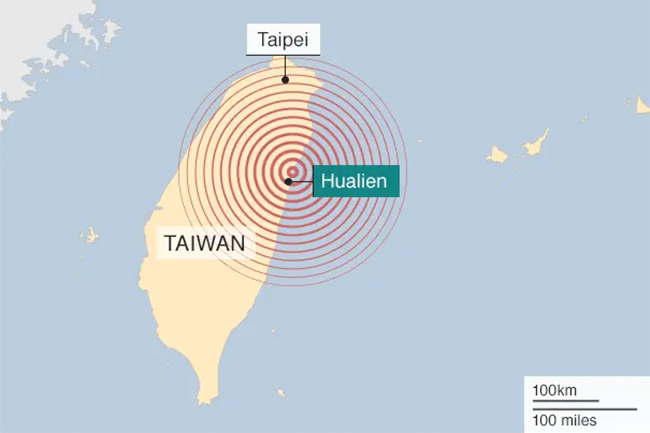Taiwan, a resilient island nation nestled near the junction of two tectonic plates, once again found itself shaken awake by two powerful earthquakes in the early hours of Saturday. The largest of the two quakes, measuring 6.1 magnitude, struck the eastern county of Hualien, sending tremors that reverberated through buildings in the capital city of Taipei. While the seismic activity sent shivers down the spines of residents, fortunately, there were no immediate reports of significant damage or casualties.
According to Taiwan’s weather administration, the first earthquake, with a depth of 24.9 km (15.5 miles), occurred just off the coast of Hualien. Barely thirty minutes later, a second quake, measuring 5.8 magnitude and with a depth of 18.9 km (11.7 miles), hit a similar location. These tremors served as stark reminders of the island’s vulnerability to seismic events, particularly in regions like Hualien, where the earth’s crust is often unsettled.
This recent seismic activity adds to a string of tremors that have rattled Taiwan in the past month. Just a few weeks prior, a devastating 7.2 magnitude earthquake struck Hualien, claiming the lives of 17 individuals and leaving behind a trail of destruction. Since then, the island has endured over 1,000 aftershocks, each serving as a haunting echo of the initial catastrophe.
Taiwan’s geographical location makes it inherently prone to earthquakes, as it sits on the Pacific Ring of Fire, a horseshoe-shaped zone known for its seismic activity. The collision of the Philippine Sea Plate and the Eurasian Plate beneath Taiwan’s surface creates a breeding ground for earthquakes, with the potential to unleash destructive forces at any given moment.
Memories of past tragedies linger in the collective consciousness of Taiwan’s inhabitants. In 2016, a powerful quake in southern Taiwan claimed the lives of more than 100 people, while the devastating 1999 Jiji earthquake, measuring 7.3 magnitude, left over 2,000 individuals dead. These seismic events serve as somber reminders of the island’s fragility in the face of nature’s raw power.
In response to the recent earthquakes, Taiwan’s authorities have issued reminders for residents to remain vigilant and prepared for further seismic activity. Building codes and infrastructure resilience have been continuously improved over the years to mitigate the impact of earthquakes, yet the threat remains ever-present.
As Taiwan navigates the aftermath of these latest tremors, the resilience and unity of its people shine through once again. Despite the uncertainty and fear that earthquakes bring, Taiwan stands strong, ready to weather any storm that nature may unleash upon its shores.


